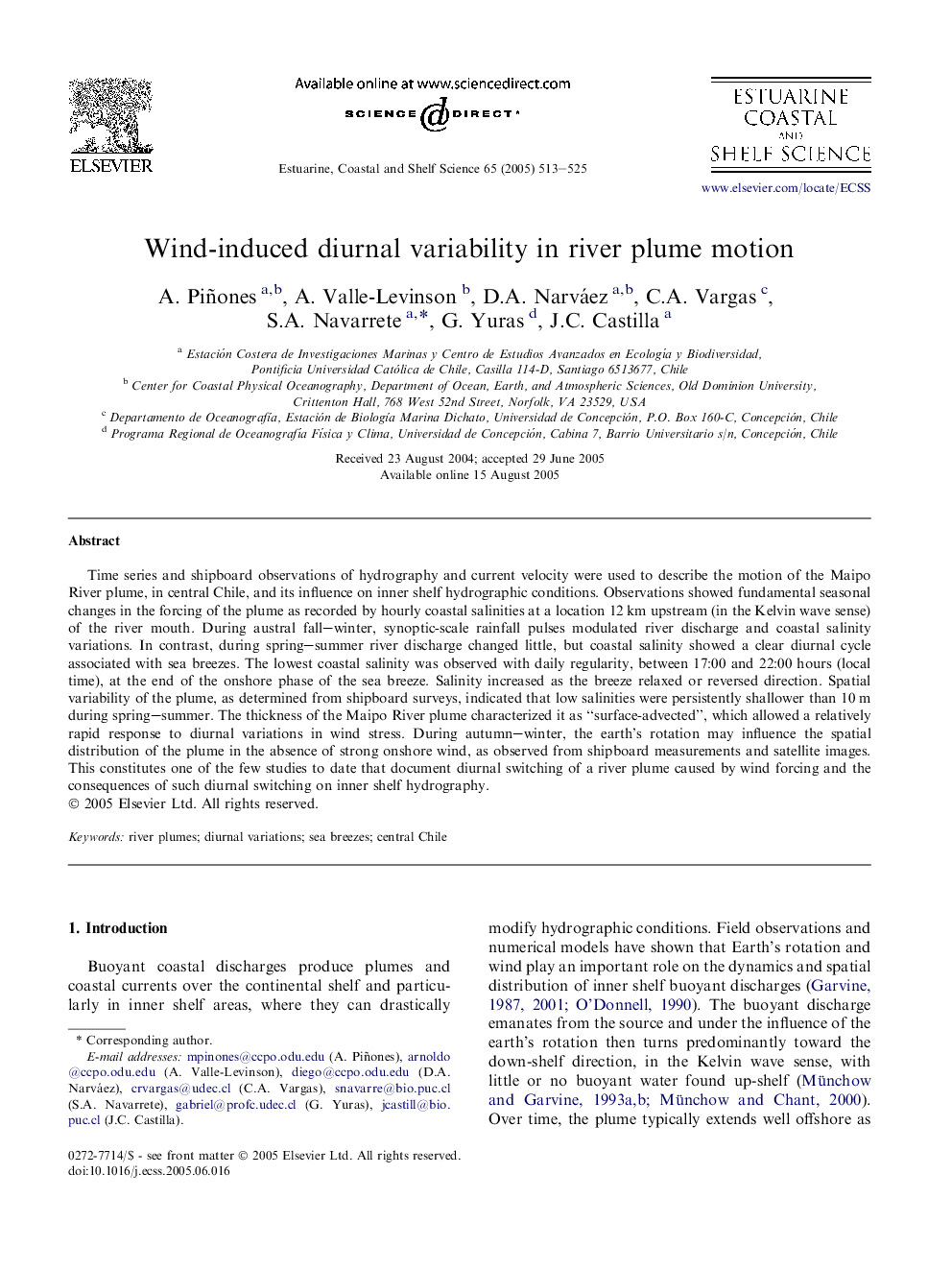| Article ID | Journal | Published Year | Pages | File Type |
|---|---|---|---|---|
| 9480708 | Estuarine, Coastal and Shelf Science | 2005 | 13 Pages |
Abstract
Time series and shipboard observations of hydrography and current velocity were used to describe the motion of the Maipo River plume, in central Chile, and its influence on inner shelf hydrographic conditions. Observations showed fundamental seasonal changes in the forcing of the plume as recorded by hourly coastal salinities at a location 12Â km upstream (in the Kelvin wave sense) of the river mouth. During austral fall-winter, synoptic-scale rainfall pulses modulated river discharge and coastal salinity variations. In contrast, during spring-summer river discharge changed little, but coastal salinity showed a clear diurnal cycle associated with sea breezes. The lowest coastal salinity was observed with daily regularity, between 17:00 and 22:00 hours (local time), at the end of the onshore phase of the sea breeze. Salinity increased as the breeze relaxed or reversed direction. Spatial variability of the plume, as determined from shipboard surveys, indicated that low salinities were persistently shallower than 10Â m during spring-summer. The thickness of the Maipo River plume characterized it as “surface-advected”, which allowed a relatively rapid response to diurnal variations in wind stress. During autumn-winter, the earth's rotation may influence the spatial distribution of the plume in the absence of strong onshore wind, as observed from shipboard measurements and satellite images. This constitutes one of the few studies to date that document diurnal switching of a river plume caused by wind forcing and the consequences of such diurnal switching on inner shelf hydrography.
Related Topics
Physical Sciences and Engineering
Earth and Planetary Sciences
Geology
Authors
A. Piñones, A. Valle-Levinson, D.A. Narváez, C.A. Vargas, S.A. Navarrete, G. Yuras, J.C. Castilla,
